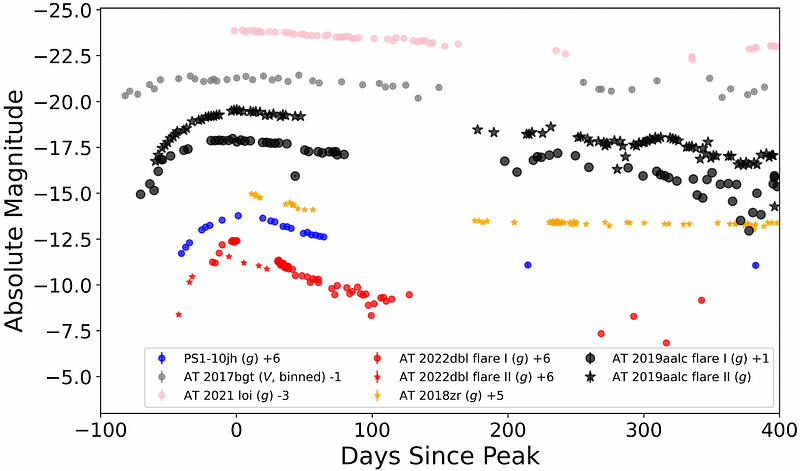AT 2019aalc: a Bowen Fluorescence Flare With a Precursor Flare in an Active Galactic Nucleus

AT 2019aalc: a Bowen Fluorescence Flare With a Precursor Flare in an Active Galactic Nucleus
Marzena Śniegowska, Benny Trakhtenbrot, Lydia Makrygianni, Iair Arcavi, Claudio Ricci, Sarah Faris, Biswaraj Palit, D. Andrew Howell, Megan Newsome, Joseph Farah, Curtis McCully, Estefania Padilla-Gonzalez, Giacomo Terreran
AbstractAT 2019aalc is a peculiar sequence of highly variable emission events observed towards the nucleus of the broad-line AGN SDSS J152416.66+045119.0. The system exhibited two distinct UV/optical flares (the first detected in 2019, the second one in 2023). Spectra obtained following the detection of the second flare revealed prominent Bowen fluorescence and high-ionization coronal emission lines, which were much weaker, if at all detectable, in a spectrum taken following the first flare. We present and analyze a large set of multi-wavelength, multi-epoch data for this source, with particular emphasis on optical spectroscopic monitoring conducted with the Las Cumbres Observatory network. During the relatively slow dimming that followed the second optical flare, the UV/optical light-curve shows a sequence of minor rebrightening events, while the Bowen fluorescence and the coronal lines vary (roughly) in tandem with these "bumps" in the broad-band light-curve. Most of the observed behavior of AT 2019aalc links it to the growing class of Bowen fluorescence flares (BFFs) while setting it apart from canonical tidal disruption events. However, AT 2019aalc has some outstanding peculiarities, including two short flares seen in its soft X-ray light-curve during the dimming phase of the second optical flare, and which do not seem to be linked to the emission line variations. We discuss the optical and X-ray properties of the source and possible scenarios of the origin of the flare, in particular radiation pressure instabilities in the (pre-existing) AGN accretion disk.